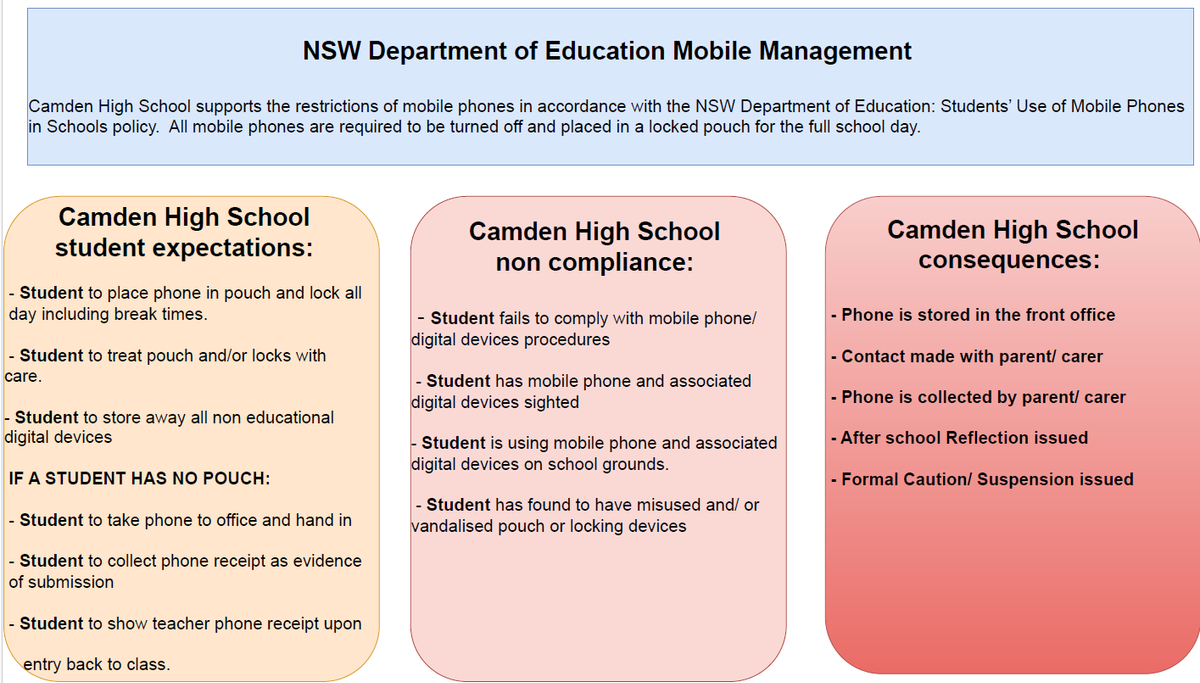From the Deputy Principals

Ensuring Online Safety for Our Children
In today’s digital age, our children are using the internet more than ever for learning, communication, and entertainment. While the internet offers numerous benefits, it also presents potential risks that we must address to ensure a safe online environment for our children.
Understanding Online Safety
Online safety involves protecting our children from harmful content and ensuring their well-being while they navigate the digital world. It’s crucial for us to talk to our children about the importance of being aware of their online interactions and the content they encounter.
Here are some essential tips to help keep your child safe online:
Open Communication: Encourage your child to talk about their online experiences. Create a safe space where they feel comfortable discussing any concerns or questions.
Set Guidelines: Establish clear rules about internet usage, including which websites are appropriate and how much time they can spend online.
Educate About Privacy: Teach your child the importance of keeping personal information private. Remind them never to share personal details such as their full name, address, or school online.
Monitor Online Activity: Keep an eye on your child’s online activity. Regularly check their social media accounts and the websites they visit.
Reporting Unsafe Content
If your child encounters inappropriate or harmful content online, it is essential to act quickly. The eSafety Commissioner provides resources and support for reporting unsafe content and cyberbullying. Here’s how you can report:
Visit the eSafety Commissioner’s Website: Go to www.esafety.gov.au for comprehensive information on online safety and reporting procedures.
Use the Reporting Tool: The eSafety Commissioner has a dedicated reporting tool for various issues, including cyberbullying, image-based abuse, and online grooming. Follow the prompts to submit a report.
Document Evidence: If possible, take screenshots or save any messages or content that you wish to report. This information can be helpful in the investigation process.
Support Your Child: If your child is affected by unsafe content, offer them support and reassure them that they are not alone. Encourage them to speak about their feelings and concerns.
Together, we can create a safer online environment for our children. By staying informed and vigilant, we can help them navigate the digital landscape confidently and securely.
Behaviour Management System at CHS
At CHS we are learners who are respectful and safe. Our prime focus is to maximise learning opportunities for all students in and outside of the classroom.
Our Behaviour Management System is designed to foster a positive and supportive learning environment for all students. This system aims to encourage good behaviour, enhance student engagement, and promote a culture of respect and responsibility within our school community.
As part of our commitment to creating a positive and respectful learning environment, we have implemented a comprehensive Behaviour Management System designed to address and escalate responses to inappropriate behaviour. This system is structured to ensure that every student understands the expectations and consequences related to their actions, ultimately fostering a culture of accountability and growth.
Overview of the Behaviour Management System
Clear Expectations: Regularly, students are informed about the school’s behaviour expectations. These include respect for others, responsibility for their actions, and a commitment to learning.
Positive Reinforcement: We believe in recognising and rewarding positive behaviour. Students who consistently demonstrate good behaviour will be acknowledged through various incentives, such as praise, awards, or special privileges.
Initial Interventions: When a student displays inappropriate behaviour, staff will first engage in a supportive conversation to understand the situation. This may involve redirection or a reminder of expected behaviours.
Documentation: If the behaviour persists, it will be documented to track patterns and provide insights into the student’s actions. This record helps us identify any underlying issues that may need to be addressed.
Escalation Process: If inappropriate behaviour continues despite initial interventions, our flowchart will be followed for interventions and supports.
Restorative Practices: We emphasise the importance of restoring relationships. When appropriate, students will be encouraged to participate in restorative conversations that help them understand the impact of their behaviour and how to make amends.
We believe that by addressing inappropriate behaviour in a structured and supportive manner, we can help our students learn from their mistakes and grow into responsible individuals. Together, we can create a nurturing environment that encourages positive behaviour and personal development.
Communication & Digital Device Management
Communication with students during school hours
Please ring or email the office if you need a message delivered to your child. Students may not have visitors at the school. Should an emergency arise, parents may contact the school by telephone. Messages of an URGENT nature will be relayed to the child and if necessary, the child will be permitted to ring parents back.
School contact number: (02) 46 55 9191
School email address: camden-h.school@det.nsw.edu.au
Device Expectations and Management

